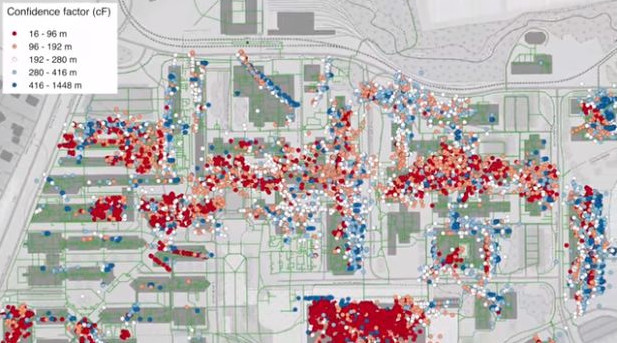Wireless networks are gathering data regarding pedestrian behavior through Wi-Fi tracking.
Walking in public spaces means passing through numerous wireless networks being accessed by Wi-Fi enabled devices. Even when Wi-Fi enabled devices are not connected to these wireless networks, Wi-Fi encountered signals can still track the bypassers, raising pedestrian’s concerns over privacy infringement. Through collecting data on pedestrian behavior through Wi-Fi networks often comes at a cost of privacy, this data can highly benefit the public good.
According to Antonin Danalet, a mobility researcher at École Polytechnique Fédérale de Lausanne, Wi-Fi tracking can highly assist urban planners to better design public spaces and even whole cities. According to Danalet, as APs are already installed all over the cities, the data on pedestrian behavior can be gathered easily and for free.
In support of his thinking, Danalet analyzed anonymous data of 789 Wi-Fi access points used by approximately 2,000 people and using the campus layout, he merged wireless access data with the data of class schedules and destination preferences. The test revealed the destination and activity preferences of both the students and the staff. For instance, he used the confidence factor (cF) to find out the places where people preferred to eat. The colored dots in the image below represent the number of the pedestrian in a public space.
 |
| source: http://bit.ly/23GRCsF (screenshot of video) |
Moreover, this kind of Wi-Fi tracking can help railway station designers evaluate the best ways to strategically distribute ticket machines and commercial venues throughout the stations, as well as to improve the traffic flow in public spaces. Wi-Fi tracking could also assist Swiss Federal Railways (SBB) that by 2030, plans to expand at least one of its stations, which will double the traffic flow. Correspondingly, Federal Railways is most likely to begin tracking pedestrians with existing Wi-Fi networks to improve crowd mobility and manage pedestrian flow in the station.
Wi-Fi tracking enables urban planners to manage congestion and to better adapt public spaces to citizens, it also gathers important data on pedestrian behavior and their destination preferences.
Click here to see full video: Pedestrian behavior using Wi-Fi data
Discover all features of Tanaza Classic
Try the new TanazaOS – Free for 15 Days
Related Articles:
Tanaza’s 5 predictions for the IT industry in 2016
LinkNYC free public Wi-Fi update
